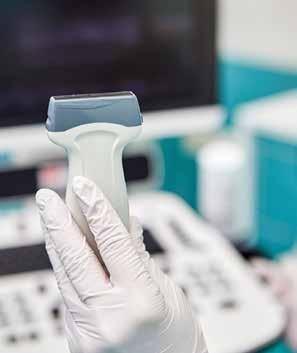PHYSICIANEACHHASEMERGENCY TO DEVELOP THEIR
AAEM NEWS FROM THE EDITOR’S DESK
OWN STYLE AND SET OF COMMUNICATION SKILLS TO DEAL WITH THE DILEMMA BETWEEN PRACTICING EVIDENCE-BASED MEDICINE AND “GIVING THE CUSTOMER WHAT THEY WANT.”
Satisfaction feedback
A Test, a Shot, and a Prescription Andy Mayer, MD FAAEM — Editor, Common Sense
Each emergency physician needs to develop a strategy to deal with the numerous patient and personalty types which we can encounter in the average shift. There are of course the chronic pain patients, the worried mother, the anxious overly concerned son, the histrionic patient, the medically savvy (at least in their mind) patient, and this list goes on and on. Successfully dealing with each of these types of patients requires patience and interpersonal skills, which can be difficult to successfully master. Each of us has a weak point and a type of difficult patient, which is especially challenging for us to handle. All of us come to the practice of emergency medicine with a unique skill set and a set of biases due to past experiences. Learning a process which you can use to deal with our patients especially with the type of patient which you feel is “worst of the worst” is crucial for each of us. A failure or limited ability in mastering these skills needed to handle these patients can lead to significant frustration for the practicing emergency physician resulting in burnout. The problems related to dealing with these patients can come to the forefront when an individual emergency physician’s patient satisfaction scores are reported. Every emergency physician now has to deal with whatever patient satisfaction tool, which your hospital uses. There are some good reasons to try and measure
patient satisfaction and useful information can be obtained from them if the methodology allows for statistically significant results. Many of these survey tools do not offer such utility and simply meet the hospitals needed data requirements even if the data is worse than useless. Bad data drives bad results and conclusions, which can injure the parties involved. This fact is why these patient satisfaction tools often lead to significant deterioration in the satisfaction of the emergency physicians with their careers. This can lead to worsening of their wellness and their ability to provide empathetic and effective care to their patients. Physicians can develop unhealthy and wasteful practices as they develop their own unique method of dealing with these patients. I do not judge the tired emergency physician who towards the end of a long late shift, ends up bargaining with the manipulative patient who senses weakness in their quest for the narcotic du jour. Each of us has high and low points in our individual ability to remain strong and true to our principles. These incidents can be reflected directly in your hospital’s satisfaction tool. Many of these satisfaction surveying devices offer the patient the opportunity to write in comments. Reading all of these is one aspect of my role as a medical director. Certainly, there are many fine comments commending the wonderful and compassionate care, which the patients received, and everyone enjoys reading those. However, this same forum can
lead to offensive and soul-sucking experiences as the comments are turned into “incidents” by your quality department. These probably well intentioned quality and safety individuals want answers and solutions to every possible reported issue. They were not at the bedside at 2:00am but awoke fresh for their weekday shift to review what you did on the nights, weekends, and holidays while they were home with their families. Dealing with the often-ridiculous sounding complaints can be wellness killers for anyone involved. One of my least favorite aspects of being a medical director is having to share some of these patient satisfaction survey responses with my partners. Certainly, all emergency physicians can have a bad day or simply have a patient with whom they cannot connect with generating a complaint. We all on occasion receive valid negative comments associated with poor outcomes, delayed diagnosis, interpersonal interactions, etc. Using this feedback to learn and grow as a doctor can be a useful tool through which we can learn to become better physicians. However, many of us find that the criticism which we receive can really be unjustified particularly when it relates to not given pain medication, not treating a virus with an antibiotic, or otherwise trying to properly and cost-efficiently care for our patients. Taking the time required to reassure an anxious mother of a child with a bump on the head is a great example of this paradox. Using properly learned assessment techniques and our
>> COMMON SENSE JANUARY/FEBRUARY 2021
5























